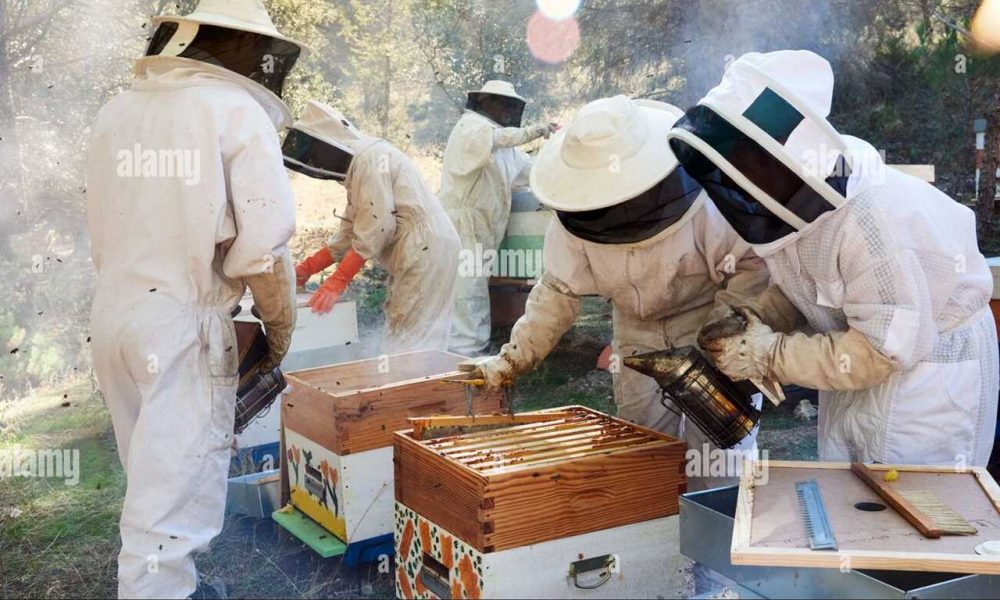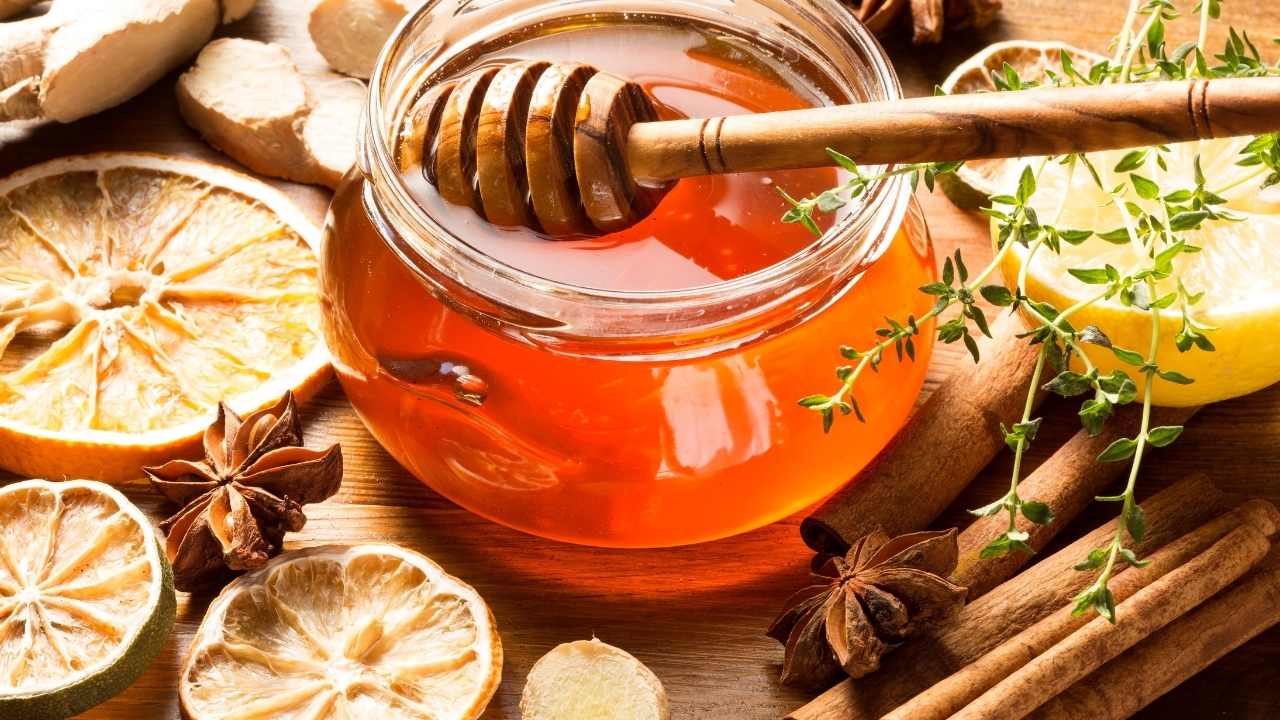
Do you ever wonder how beekeepers are able to work with bees without getting stung? It’s all about the protective gear they wear! As a new beekeeper, it can be overwhelming trying to figure out what gear you need and how to use it properly. That’s why we’ve put together this guide to help you don your armor and stay safe while tending to your bees.
Protective gear is crucial in beekeeping because it not only helps prevent painful stings but also protects against allergies and other potential hazards. The right gear can also make the process of inspecting hives much easier, allowing you to focus on caring for your bees rather than worrying about getting stung. In this guide, we’ll go over the different types of protective gear available, how to choose the right gear for your needs, and tips for maintaining and using your gear effectively. So let’s get started on keeping you safe while serving our buzzing friends!
The Importance of Protective Gear in Beekeeping
It’s crucial to shield yourself from bee stings while handling these buzzing insects. As a beekeeper, you’re working with a colony that can contain up to 60,000 bees. While bees are generally gentle creatures, they can become aggressive when provoked or disturbed. This is why it’s important to understand the benefits and risks of using protective gear in beekeeping.
The benefits of wearing protective gear include minimizing the risk of bee stings and preventing any allergic reactions that may occur due to repeated exposure. However, cost and availability can be factors that prevent some beekeepers from investing in high-quality gear. Despite this, it’s important to remember that your safety should always come first when dealing with bees. With this in mind, let’s dive into the different types of protective gear available for beekeepers.
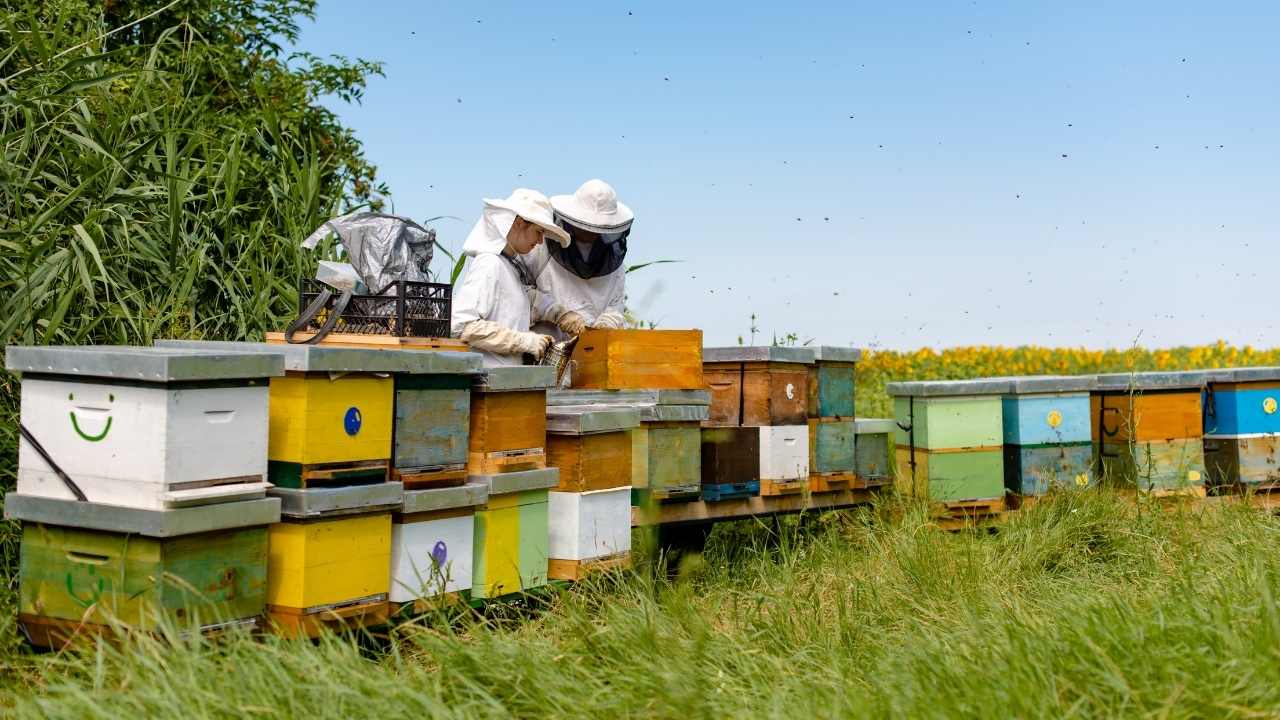
Types of Protective Gear
When it comes to beekeeping, protective gear is essential for your safety. Bee suits are a popular choice as they cover your entire body and provide ample protection against stings. Veils are also crucial as they protect your face and neck from bee attacks. Gloves and boots complete your protective outfit by ensuring that no part of your skin is exposed to the bees. Remember, investing in high-quality protective gear is a small price to pay for peace of mind and safety during beekeeping.
Bee Suits
You’ll feel like a superhero in your bee suit, ready to take on any buzzing adversary. Bee suits are essential protective gear for beekeepers that provide full coverage from head to toe. They come in different materials such as cotton, polyester, or a combination of both with varying levels of breathability and protection.
When choosing a bee suit, consider the weather conditions and the level of protection you need. If it’s hot outside, opt for a breathable suit to avoid overheating. On the other hand, if you’re dealing with aggressive bees or working in an area known for Africanized bees, choose a suit with maximum protection even if it means sacrificing some breathability. Some bee suits offer partial coverage with detachable jackets and veils while others provide complete coverage with attached hoods and boots.
As important as the bee suit is, the veil is just as crucial since it protects your face and head from stings. In the next section, we’ll discuss veils and how they differ from one another.
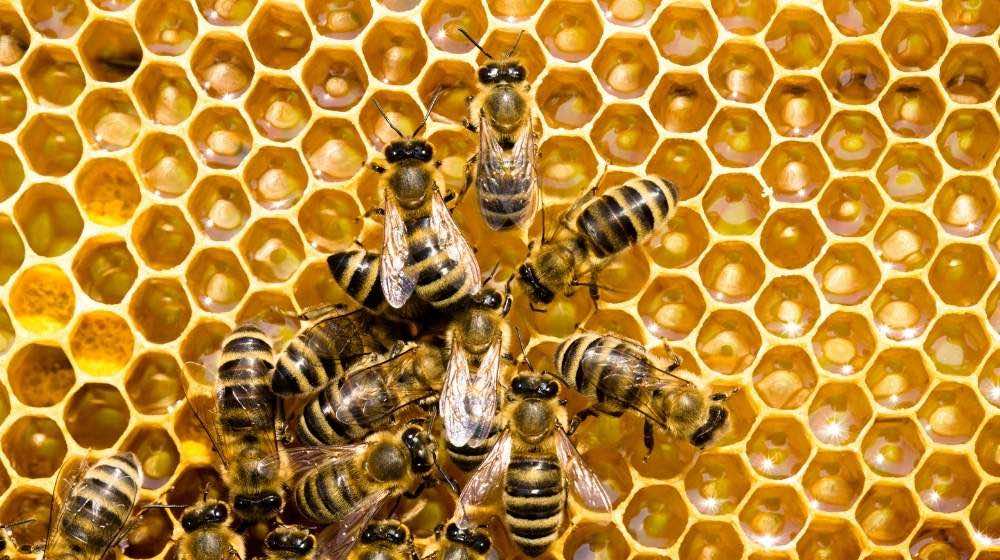
Veils
Wearing a bee suit with a proper veil is crucial for the safety of beekeepers as it protects their face and head from painful stings. Veils come in different styles and materials, so choosing the right one can make all the difference in your beekeeping experience.
Here are four things to consider when selecting a veil:
- Style – Do you want a round hat or a helmet-style veil? A round hat provides more ventilation but may not offer as much protection, while a helmet-style veil offers full head protection but can be hotter to wear.
- Material – Veils can be made of mesh, canvas or plastic. Mesh veils provide better visibility but may not hold up well against aggressive bees, while canvas or plastic veils give better protection but may hinder vision.
- Size – Make sure your veil fits properly, covering your entire face without gaps where bees could enter.
- Durability – Choose a veil made of sturdy material that can withstand repeated use and cleaning.
Now that you have chosen the perfect veil, let’s move on to selecting gloves for complete protection during hive inspections.
Gloves
To keep your hands safe from stings and irritation, slip on a sturdy pair of gloves while inspecting the hive. Beekeeper gloves come in different materials, such as leather and nitrile. Leather gloves are durable and provide good protection against stings, but they can be bulky and limit dexterity. Nitrile gloves, on the other hand, are thinner and more flexible than leather gloves. They still offer ample protection against bee stings but may wear out faster.

When selecting beekeeping gloves, it is essential to choose a brand that produces high-quality products. Some of the best glove brands for beekeepers include Humble Bee, VIVO, and Mann Lake. These brands offer various glove sizes to ensure a comfortable fit for every beekeeper’s hand size. Remember that choosing the right pair of gloves is crucial in protecting yourself from potential harm while working with bees.
As you prepare for your next hive inspection, don’t forget about protecting your feet with suitable boots to round out your protective gear ensemble!
Boots
Strap on your trusty beekeeping boots and get ready to stomp out any potential buzzkill during your hive inspections. When it comes to protecting your feet, there are a few things you need to keep in mind. Here are some tips for selecting the right boots for beekeeping:
- Boot types: Beekeeping boots come in different styles, including ankle high or knee-high rubber boots. While ankle-high boots may be more comfortable, knee-high boots offer better protection against bee stings.
- Proper sizing: It’s important to choose the right size of boot to ensure maximum comfort and protection. Make sure to measure your foot properly and try on different sizes before making a purchase.
- Cleaning and storage tips: After each use, make sure to clean your beekeeping boots thoroughly with soap and water. Store them in a dry place away from direct sunlight.
Choosing the right protective gear is crucial when it comes to safe beekeeping practices. Now that you know how important proper footwear is, let’s move on to other essential gear for keeping yourself protected while tending to your bees.
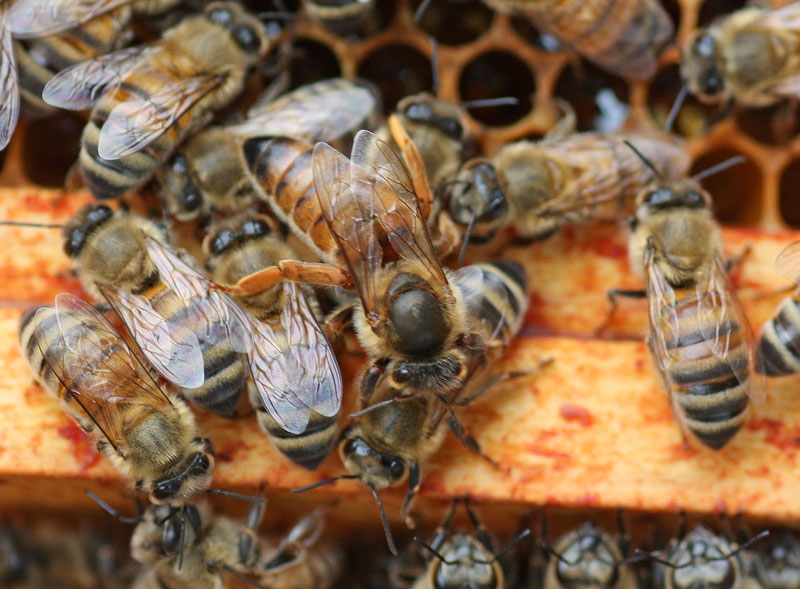
Choosing the Right Protective Gear
When it comes to staying safe while working with bees, it’s important to carefully consider which gear will offer you the best protection. One of the first things to think about is the material options available for your protective gear. Common choices include canvas, synthetic blends, and leather. Canvas is a lightweight and affordable option but may not be as durable as other materials. Synthetic blends are often more expensive but offer better protection against stings and can be easier to clean. Leather is a popular choice for beekeeping gloves because it offers excellent durability and sting resistance.
Another important consideration when choosing protective gear is sizing. It’s crucial that your suit fits properly so that bees cannot get inside. Be sure to measure yourself before purchasing an outfit and consult size charts if necessary. Keep in mind that different brands may have slightly different sizing guidelines, so it’s always a good idea to try on gear before making a purchase. By selecting the right material options and ensuring proper sizing, you’ll be well on your way to staying safe while working with bees! And remember, maintaining your protective gear regularly is just as essential as choosing high-quality equipment in the first place!
Maintaining Your Protective Gear
So, you’ve decided to neglect the upkeep of your precious beekeeping equipment and let it become a breeding ground for bacteria and mold – good luck with that! Proper cleaning and storage of your protective gear is essential to keep it in good condition and increase its lifespan. After each use, rinse off any honey or wax residue with warm water, then wash with soap and water. Use a soft-bristled brush to clean hard-to-reach areas like zippers or mesh screens. Hang your gear upside down to air dry completely before storing it in a cool, dry place away from direct sunlight.
Regularly inspect your protective gear for signs of wear and tear that may compromise its effectiveness. Check for holes in the fabric, loose stitching, cracked visors or missing buttons. Repair any damage immediately using appropriate materials such as patching tape or replacement parts. If your gear is beyond repair, replace it as soon as possible to avoid risking injury from bee stings. Taking these simple steps will help ensure that your protective gear remains in top shape when you need it most.
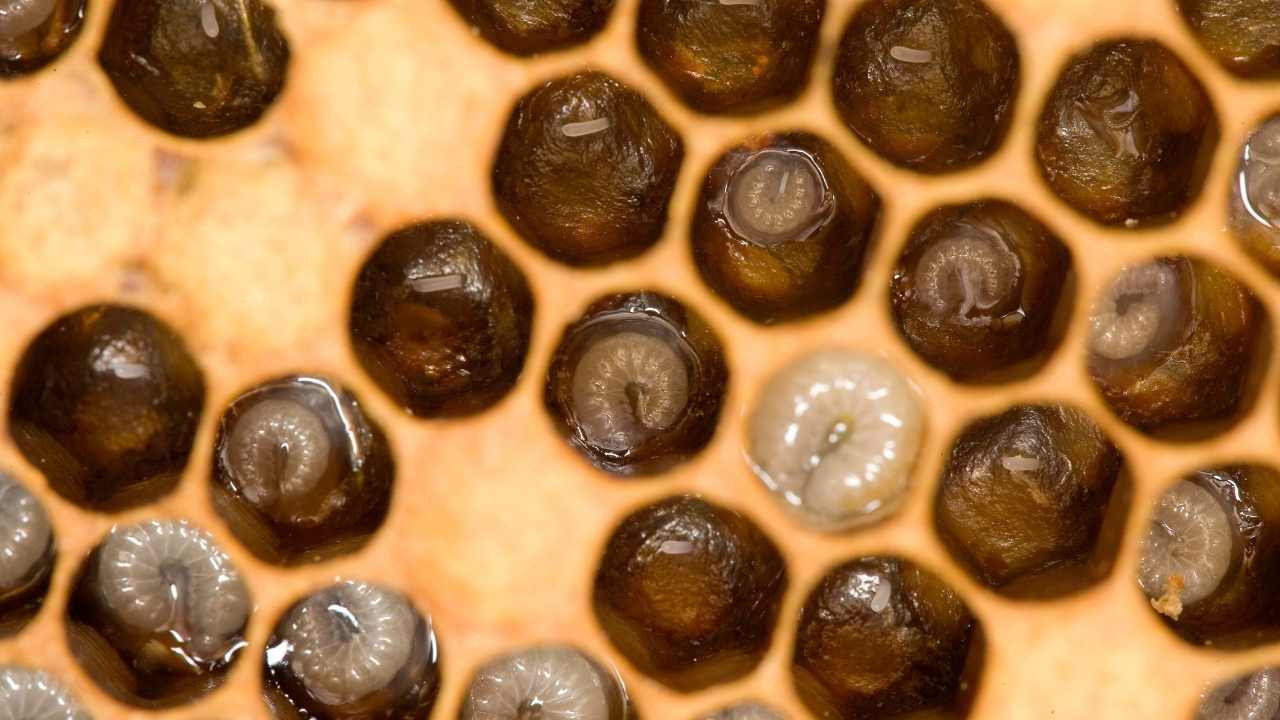
Now that you know how to maintain your protective gear properly, let’s talk about some alternative measures you can take to further protect yourself while working with bees.
Alternative Protective Measures
When it comes to beekeeping, you need to take protective measures seriously. Yet sometimes the traditional suit and veil can be uncomfortable or impractical for certain situations. That’s why it’s important to consider alternative options such as natural repellents, using smoke, and timing your beekeeping activities strategically. By learning about these methods, you can ensure that you stay safe while working with bees in a way that works best for you.
Natural repellents
Looking for a way to keep pesky bees away without harming them? Check out these natural repellents! Homemade options such as garlic, onions, and vinegar can be sprayed around your beekeeping area to keep bees at bay. Essential oils like peppermint, eucalyptus, and lemongrass also work well when mixed with water and sprayed on surfaces.
Another effective natural repellent is smoke. This technique involves using a smoker filled with materials like pine needles or burlap to release smoke into the air. The scent of the smoke masks any pheromones released by the bees, making it difficult for them to communicate with each other. Plus, the smoke also calms the bees down and makes them less aggressive during inspections. Always use caution when working with fire and smoke, but this method can be a great addition to your protective gear arsenal.
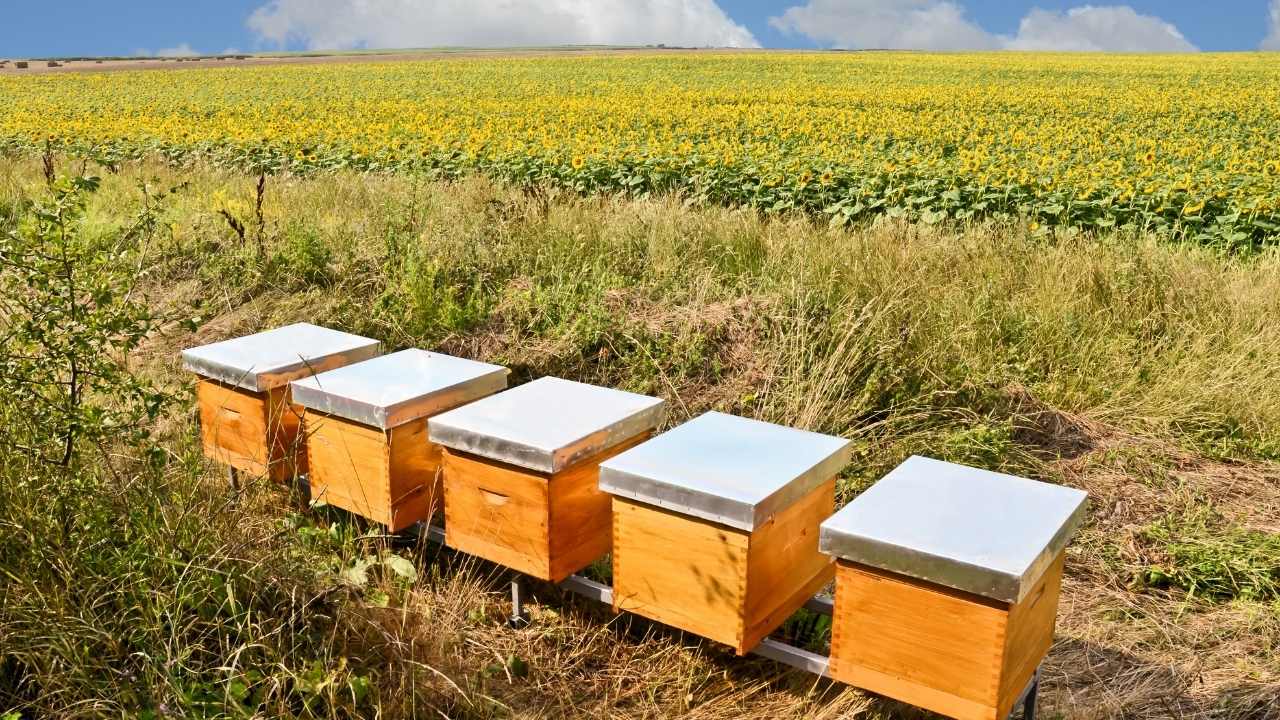
Smoke
Now that you have learned about natural repellents, let’s talk about another important tool in your beekeeping arsenal: smoke. Experienced beekeepers know that using smoke effectively can help calm bees and make it easier to work with them. Smoke masks the alarm pheromones that bees release when they feel threatened, which helps prevent them from becoming agitated and aggressive.
However, it’s important to use smoke carefully and in moderation. Excessive smoke exposure can be harmful to both you and your bees. Inhaling too much smoke can cause respiratory problems or even unconsciousness, while exposing your bees to too much smoke can stress them out and harm their health. To avoid these risks, start by lighting a small amount of kindling in your smoker before adding any fuel. Once the kindling is burning well, add a few handfuls of dry leaves or twigs to create a steady stream of cool smoke rather than thick clouds of hot fumes. Use the minimum amount of smoke necessary to keep your bees calm – if you see them starting to move away from the hive or acting agitated despite the smoke, take a break until they settle down again.
Timing is also an important factor when it comes to using smoke effectively. Knowing when and how often to apply it will depend on factors such as weather conditions, time of day, and the temperament of your particular colony. We’ll cover these timing considerations in more detail in the next section on preparing for your hive inspection.
Timing
Using smoke effectively is crucial for calming bees, but it’s important to do so in moderation and with proper timing. Here are some best practices to keep in mind when using smoke:

- Start smoking the hive before opening it up. This gives the bees time to become accustomed to the smell and begin feeding on honey, which makes them less likely to sting.
- Use a small amount of smoke at first, and then gradually increase as needed. Too much smoke can actually agitate the bees instead of calming them down.
- Be mindful of seasonal considerations when using smoke. In cooler weather, you may need more smoke to get the same effect as in warmer weather.
By following these best practices, you can use smoke effectively and safely during your beekeeping activities. Remember that timing is key – don’t rush into things without giving your bees time to adjust!
As you prioritize safety in beekeeping, remember that protective gear is just one aspect of staying safe around your hives. In addition to wearing appropriate clothing and equipment, be sure to educate yourself about bee behavior and take steps to minimize disturbances whenever possible. By working with your bees rather than against them, you’ll create a safer environment for both yourself and your buzzing friends!
Conclusion: Prioritizing Safety in Beekeeping
Make sure safety is your top priority while working with bees, as it will help you avoid any potential harm or injuries. When it comes to beekeeping, prioritizing safety means taking the necessary steps to protect yourself from stings, allergic reactions, and other accidents that can happen on the job. It also means considering factors like cost vs. safety when purchasing protective gear and getting proper training for safe beekeeping practices.
Cost vs. safety is an important consideration when choosing the right protective gear for beekeeping. While it may be tempting to go for cheaper options, investing in high-quality equipment can provide better protection against bee stings and other hazards. Similarly, getting proper training from experienced professionals can help you learn best practices for handling bees safely and avoiding accidents on the job. By prioritizing safety in your beekeeping practice, you can enjoy a fulfilling hobby without putting yourself at unnecessary risk of harm or injury.
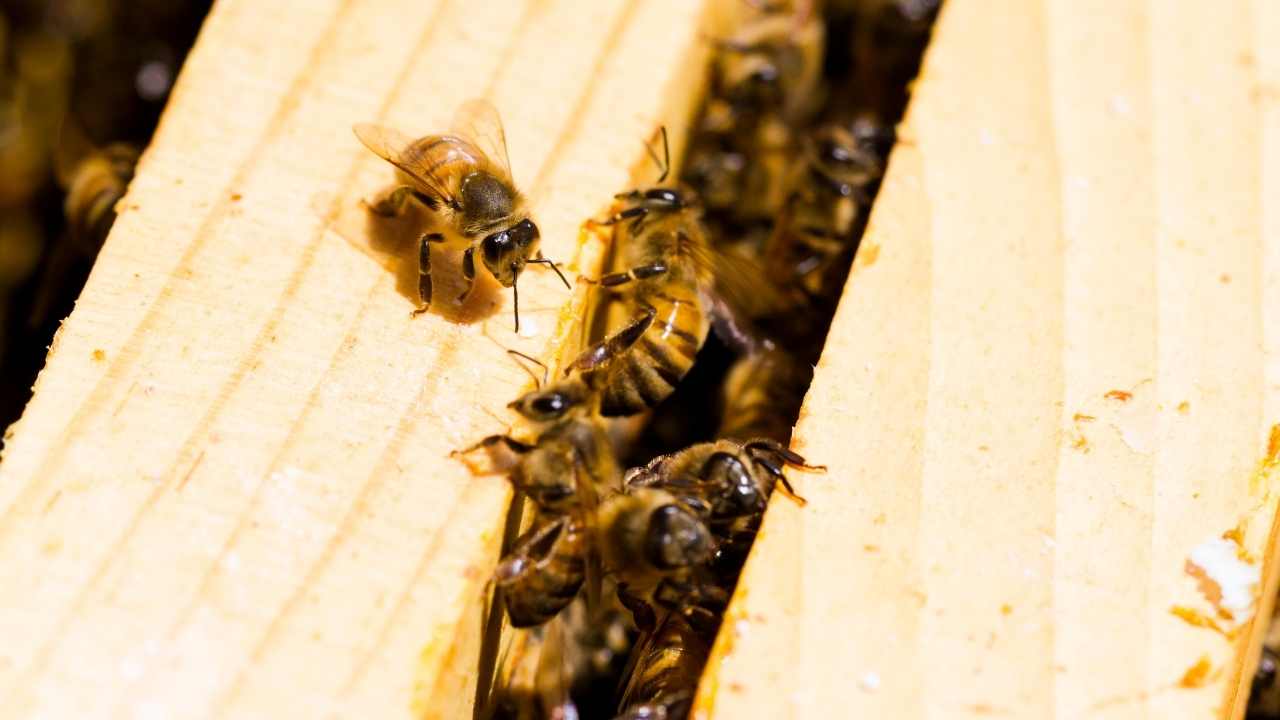
Frequently Asked Questions
How do I know if my protective gear fits properly?
Making sure your protective gear fits properly is crucial to ensure you are fully protected while beekeeping. To start, refer to the measuring guide provided by the manufacturer and measure yourself carefully. One common mistake people make is assuming their size based on their regular clothing size or guessing without measuring themselves properly. Once you have your measurements, check the sizing chart provided by the manufacturer and choose the appropriate size according to your measurements. It’s important to note that different brands may have slightly different sizing charts, so always refer to the specific brand’s chart before purchasing. When trying on your gear, make sure it fits snugly but still allows for comfortable movement and breathing. A good fit will prevent bees from getting inside your suit or veil and stinging you, providing optimal protection while beekeeping.
Can I use regular gloves instead of beekeeping gloves?
When it comes to beekeeping, regular gloves may seem like a good alternative to beekeeping gloves. However, there are several benefits to using specialized beekeeping gloves over regular ones. Firstly, beekeeping gloves are designed with extra-long cuffs that extend up the forearm and provide additional protection against stings. They also have a snug fit that prevents bees from getting inside the glove. Additionally, beekeeping gloves are typically made of thicker material that is more resistant to punctures and tears than regular gloves. So while regular gloves may seem like a cheaper option at first glance, investing in quality beekeeping gloves can save you from painful stings and potential injury in the long run.
What is the best way to clean my protective gear?
When it comes to maintaining your beekeeping protective gear, cleaning techniques are crucial in ensuring its longevity. The first step is to remove any excess propolis or wax build-up with a scraper or brush. Then, use warm water and mild soap to gently wash your suit, gloves, and veil. Avoid using harsh chemicals that can damage the fabric or compromise their effectiveness against stings. Once washed, hang your gear up to air dry completely before storing it in a cool, dry place away from direct sunlight. Regular maintenance tips also include inspecting for holes or tears and repairing them promptly to prevent bees from getting inside your suit during future inspections. Remember – proper care of your protective gear not only ensures its lifespan but also keeps you safe while working with bees.
Is it necessary to wear protective gear even when working with a small number of bees?
As a beekeeper, it’s important to prioritize your safety while working with bees. Even if you’re only dealing with a small number of bees, wearing protective gear can greatly benefit you in the long run. Not only does it provide an extra layer of protection against stings and potential allergic reactions, but it also helps prevent any unnecessary disturbances that could agitate the bees. Of course, choosing to wear protective gear ultimately comes down to personal preference and comfort level. However, keep in mind that taking precautions now can save you from potential harm later on.
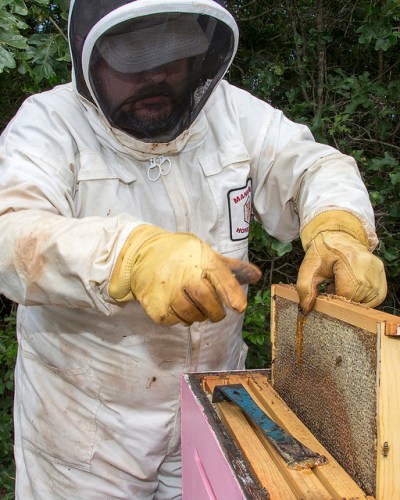
Can I make my own protective gear instead of purchasing it?
If you’re considering making your own DIY protective gear for beekeeping, it’s important to take safety concerns seriously. While it may be tempting to save money by creating your own gear, improper construction or use of materials could put you at risk of stings and other injuries. It’s crucial to research proper construction techniques and materials before attempting to make your own protective gear. Additionally, consider the potential consequences of using homemade gear instead of professionally-made equipment designed specifically for beekeeping. Ultimately, investing in high-quality protective gear is a small price to pay for the peace of mind and safety that comes with knowing you’re well-protected while working with bees.
Conclusion
Congratulations! You’ve learned about the importance of protective gear in beekeeping, the types of gear available, how to choose and maintain your gear, and even alternative protective measures. But before you head out to tend to your buzzing friends, let’s review one final statistic that will drive home just how crucial it is to wear proper protection.
Did you know that each year in the United States alone, there are over 100 deaths related to bee stings? That’s right – over 100 people lose their lives because they were not adequately protected while working with bees. This sobering statistic should be all the motivation you need to prioritize safety when it comes to beekeeping.
So remember: always wear appropriate protective gear when tending to your hives. Make sure it fits well and covers all areas of exposed skin. Don’t forget about gloves and sturdy footwear as well. And if you’re ever tempted to skip wearing your gear "just this once", remind yourself of that tragic statistic – it simply isn’t worth risking your life for a few moments of convenience. Happy (and safe) beekeeping!
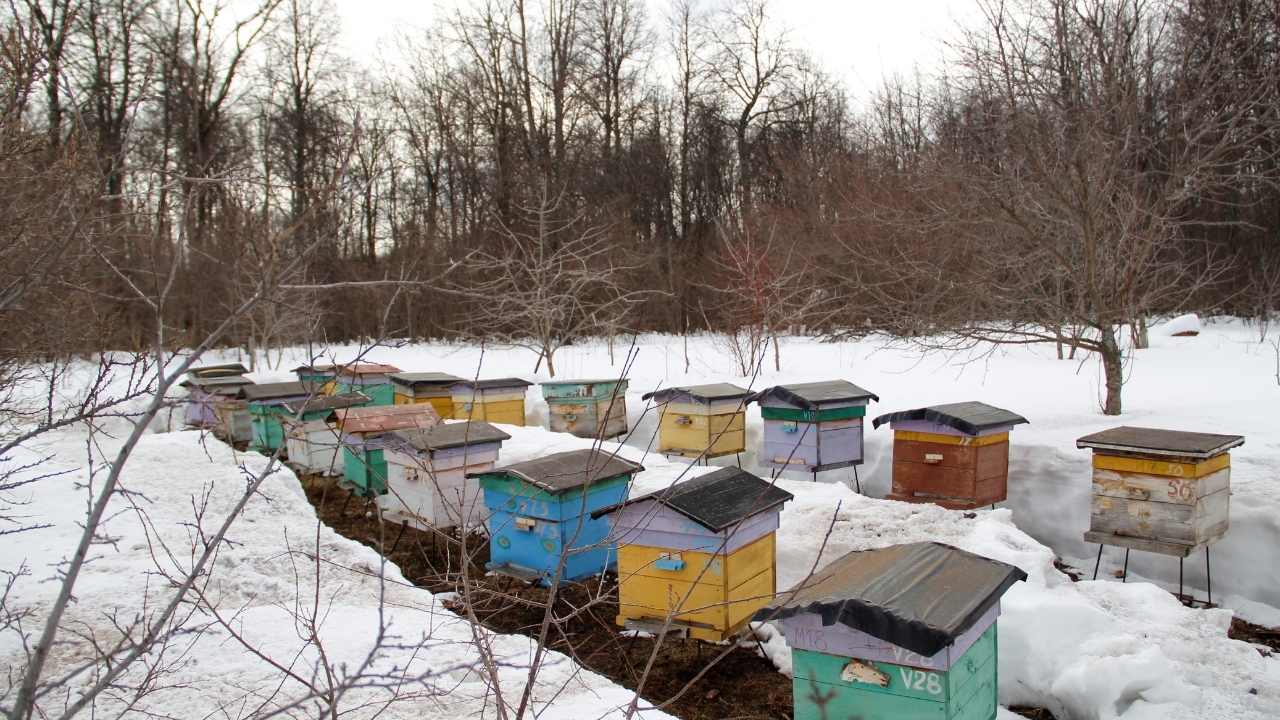

Roger Thomas is a seasoned beekeeper and hive architect with a deep-seated passion for sustainable living. His fascination with bees has shaped his professional career, giving him practical and theoretical expertise in bee behavior, colony health, and optimal hive conditions. Roger’s technical skills shine in his bespoke hive creations that cater to the specific needs of diverse bee species, while his sustainable practices promote environmental balance and the wellbeing of the bee population.
As he continues his journey in beekeeping, Roger has become a dedicated advocate for responsible practices and an insightful educator in his field. His posts aim to inspire new beekeepers, underline the importance of sustainability, and showcase the remarkable contribution bees make to our ecosystem. Roger invites you to join him as he delves into the world of bees and the rewarding, honey-sweet art of beekeeping.


